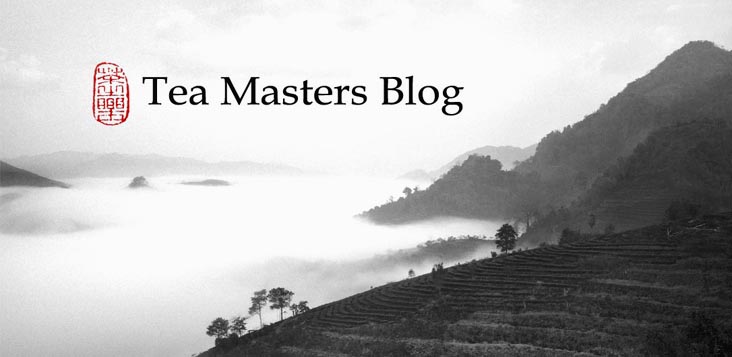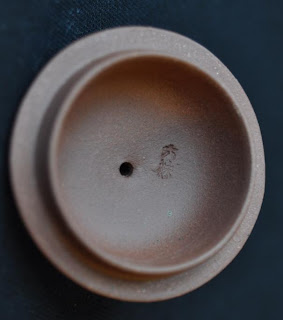 The shape of this teapot is either called 線瓢 (Xiàn piáo) or 芭樂 (Bālè). Both names (scoop and guava) suggest a round shape in a poetic way.
The shape of this teapot is either called 線瓢 (Xiàn piáo) or 芭樂 (Bālè). Both names (scoop and guava) suggest a round shape in a poetic way. Ancient Chinese were very creative and full of imagination to create names for tea and tea ware. This state of mind brings a lot of pleasure when creating a Cha Xi, but it can be dangerous to listen too closely to the wonderful stories told by teapot vendors. When selecting a teapot, I recommend a more utilitarian approach.
The quality of the clay and a good firing are what matters most. With these 2 teapots, we can see that the craftsmanship isn't very refined. They were made in large series. But on the positive side, the material used is genuine and the cover produces a high pitched sound when it touches the body of the teapot. This is a sign of a a high temperature firing that has hardened the clay very well.
Above, the teapot is made with Hungni, red Yixing clay.
The volume of the teapot is 105 ml (10.5 cl) and it weighs 102 grams (may vary slightly from pot to pot).
Here is its twin teapot made zisha clay. A close inspection of the surface shows an interesting and natural material.
We can also see that these pots have a small, single hole. This is also the case with many high quality teapot I have encountered. This isn't a problem with most teas, except when they are very broken.
The teapots have one marking under the lid.
They perform well with Oolong and puerh. The rounding, mellowing effect isn't too strong. The teapot doesn't hollow out the tea. The scents of the tea are respected and come out naturally. The hungni seems a little bit brighter than the zisha in terms of fragrance. It's a better fit for fresh and light teas. The zisha, on the other hand, would be a better fit with roasted Oolongs or darker puerhs.
The chop under the teapot simply says 'China Yixing'.
I recommend that you rinse your teapot several times with boiling water. You can also let it soak in mineral water for a day, rinse it and dry it in the sun. This will help remove the storage smells that have accumulated. I don't recommend boiling it in tea leaves or to clean it with chemicals.
However, this kind of teapot will benefit greatly from a regular usage. That's the best way to create a natural and shiny patina.















3 comments:
used the zisha with a heavily roasted TGY from Hong Kong, and must say the pot really mellowed the heavy roast at least to my liking. the tea was used in other pots and in some they were noticeably "heavy fire" tasting, so comparisons were made before commenting here. I got the pot Tuesday!
I must say that after receiving the pot Tuesday and brewing a heavily fired TGY the pot really performed well. Tea was brewed in other tea pots where some of the results wasn't to my liking. After comparing I wanted to say that the zisha pot really does its job.
Thanks for your positive feedback. I'm glad you're satisfied with its performance.
(And sorry for the comment moderation that has caused you to write twice!)
Post a Comment